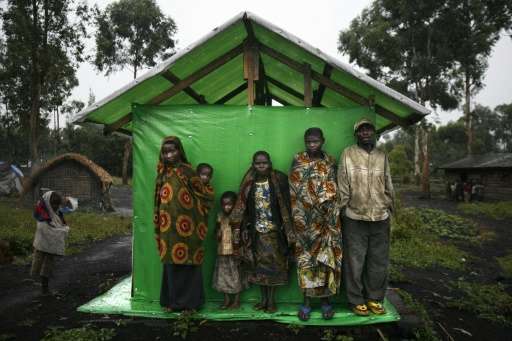Pygmies' stunted growth explains human success

The pygmies of West Africa evolved their short stature independently, and very differently, from their cousins in East Africa, French researchers said Tuesday.
The finding is evidence for the theory that dwarfism is an adaptation to environmental conditions—in this case life in an equatorial rain forest, they wrote in the journal Nature Communications.
It also shows that human traits such as growth rate can evolve "within a relatively short period of time," which allowed humankind to adapt rapidly to new environments and colonise the planet.
Scientists have long sought to understand how the physical development of pygmies, who derived from a common Bantu-speaking ancestor some 60,000 years ago, differs from that of other human groups.
Are they born smaller? Or do they stop growing at some point?
The new study, based on growth data from several hundred members of Cameroon's Baka pygmy tribe from birth to adulthood, found that their growth pattern differed not only from that of taller races, but also from other pygmies.
In the Baka, babies were normal size at birth, but their growth slowed significantly during the first two years of life. It "then more or less follows the standard pattern, with a growth spurt at adolescence," said the paper.
In the East African Efe and Sua tribes, people are smaller already at birth, previous observations have shown.
The eastern and western groups nevertheless grow to a similar adult height.
The difference pointed to a process of "convergent evolution," in which different groups acquire similar features independently, said the researchers.
"This happened after the separation into East and West African pygmies" some 20,000 years ago, study co-author Fernando Rozzi of France's National Centre for Scientific Research (CNRS) told AFP.
The team hypothesised that "a population living around the periphery of the rain forest moved eastwards and westwards to follow the forest's regression and the expansion of the savannah, which at this point was nearing the Equator" due to climate changes associated with the last ice age.
Key to human success
The two groups became isolated from one another after the climate started warming again about 13,000 years ago, and adapted independently to their new environmental conditions.
The team said dwarfism is a phenomenon observed in island-dwelling mammals—likely caused by a lack of predators and limited resources.
This also applied to "environmental islands" where patches of land, like a rain forest, are surrounded by a very different type of environment.
The findings suggest human growth patterns can evolve relatively quickly —a phenomenon called "plasticity" that would have allowed mankind to adapt easily to new conditions.
"This plasticity in human growth would have played an important role in Homo sapiens' fast spread around the world—we left Africa about 60,000 years ago and a few thousand years later occupied the entire planet," said Rozzi.
The change is thought to be regulated through growth hormones released before and after birth.
More information: Nature Communications, DOI: 10.1038/ncomms8672
Journal information: Nature Communications
© 2015 AFP


















